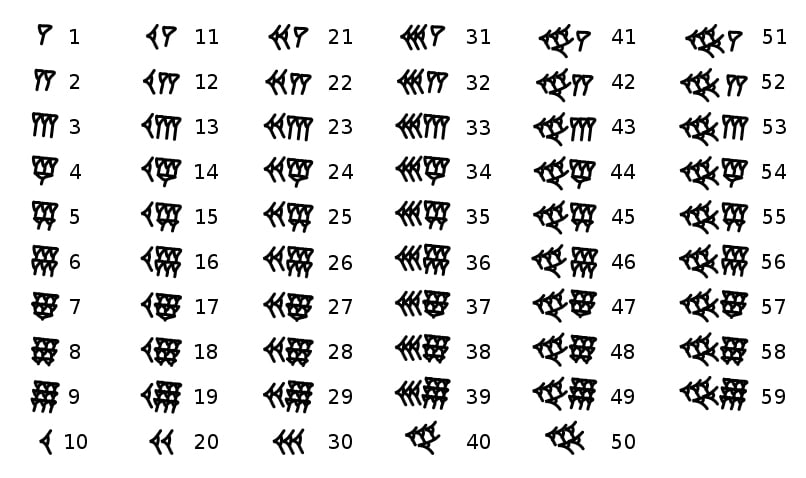Why Is A Full Circle 360 Degrees, Instead Of Something More Convenient, Like 100?Updated On: 14 Jan 2020 By Piyush Patel A full circle is 360 degrees because of the Babylonian’s usage of the sexagesimal system, number of days in a year and also because 360 is highly composite. Click here.
Why Is A Full Circle 360 Degrees, Instead Of Something More Convenient, Like 100?
A full circle is 360 degrees because of the Babylonian’s usage of the sexagesimal system, number of days in a year and also because 360 is highly composite.
The other day, I was helping my 12-year-old cousin with his Math homework. His homework had questions related to the area of a circle with a certain radius and circumference. Being an engineer, the questions seemed pretty simple to me, and we were able to knock them all out in 15 minutes.
However, the thing that constantly bugged my cousin was, why is a full circle 360 degrees? Why not something simpler like 10 degrees or 100 degrees? All the calculations would have been so simple; wouldn’t that be more convenient?
Mathematical Reasons (Theory #1)
You must be wondering what mathematical reasons there might be for using 360 degrees to represent a complete circle. The number 360 always seems to cause trouble when calculating the answers to your kid’s/cousin’s math homework questions.
However, it’s actually the ideal solution. A number like 10 or 100 would have been more inconvenient mathematically. Let me explain…
The number 360 is divisible by every number from 1 to 10, aside from 7. It actually divides into 24 different numbers: 1,2,3,4,5,6,8,9,10,12,15,18,20,24,30,36,40,45,60,72,90,120,180 and 360 itself. These 24 numbers are called the divisors of the number 360. This is the highest number of divisors for any positive whole number up to its own value of 360. For example, the number we often wish would be the value for the full circle—100—has only 9 divisors.
This characteristic of the number 360 makes it a highly composite number. Numbers are said to be highly composite if they are positive integers with more divisors than any smaller positive integer has. The only highly composite numbers below 360 are 2, 6, 12, 60 and 120. Highly composite numbers are considered good base numbers with which to perform common calculations.
For example, 360 can be divided into two, three and four parts and the resulting number is a whole number. The resulting numbers are 180, 120 and 90. However, dividing 100 by three doesn’t end in a whole number. Instead, it provides a decimal value of 33.3 recurring, which makes performing calculations difficult. Calculations using 360 actually become pretty simple once you’re smart enough to do them in your head and can put down the calculator.

The number 360 on dividing into 2,3 or 4 parts provides a whole number while 100 on dividing into 3 parts doesn’t provide a whole number and can cause difficulties when performing calculations.
But is that the whole justification? Was this the only reason why our ancestors decided to break a full circle into 360 degrees?
The length of a year (Theory #2)
Have you all ever wondered why there are exactly 365 days in a year? Again why wouldn’t they use a more convenient number like 300 or 400?
Okay, this one doesn’t exactly have a mathematical reason but is merely an observation that our ancestors made. These observations also contributed to a full circle being 360 degrees. (Source)
Ancient astronomers, mainly the Persians and the Cappadocians, noticed that the sun took 365 days to come back to the exact same position. For simplicity, they decided to round that down to 360 days per year.
In other words, the sun advances by one degree each day along its elliptical path. The Persians had a leap month every 6 years to adjust for the 5 extra days. Also, the lunar calendar has a total of 355 days, while the solar calendar has 365. And what number sits perfectly between the two and is a highly composite number?
Yes… 360!
Historical reasons (Theory #3)
Another theory that suggests why a full circle is considered to be 360 degrees comes from the Babylonians. The Sumerians and Babylonians were known to use the Sexagesimal numeral system. The sexagesimal system is one with a base value of 60, whereas the current system we use is known as the decimal system and has a base value of 10. So, once we reach the 10th number, we start repeating the symbols (of previous numbers, from 0 to 9) to form new numbers.

The 60 symbols used by the Babylonians in the Sexagesimal Numeral System (Photo Credit: Josell7/Wikimedia Commons)
The Babylonians had 60 different symbols with which they formed numbers. Again, why would they use 60? Because 60, just like 360, is a highly composite number with up to 12 factors. Just as we can count 10 on our fingers for the decimal system, we can also count to 60. Start by counting the knuckles of the 4 fingers (not the thumb) on your right hand. 12, right? Now, on the other hand, raise any of those fingers to remember that you finished one iteration and got the number 12. Now, repeat the same procedure as many times as the number of fingers remaining on the left hand. The number you will end up with is 12 knuckles x 5 fingers = 60.
But still… why 360?
If we were to draw an equilateral triangle with the length of sides equal to the radii of the circle and place one of its vertexes at the center of the circle, then we could fit a total of 6 such equilateral triangles inside a circle. Since the Babylonians used the sexagesimal numeral system, they considered each triangle to have a base value of 60. Thus, 6 triangles x 60 base value again gives us a value of 360.

A total of six equilateral triangles of sides equal to the radii of the circle can be fitted inside it. Each triangle in the sexagesimal system was given a base value of 60. So 6 triangles × 60 base value = 360
The Indian context
There is even some evidence of a circle being divided into 360 parts in the Rigveda, from India.
Twelve spokes, one wheel, navels three.
Who can comprehend this?
On it are placed together
three hundred and sixty like pegs.They shake not in the least.
— Dirghatamas, Rigveda 1.164.48
References:
 What is Evolution? A Simple and Brief Explanation
What is Evolution? A Simple and Brief Explanation What is the Heisenberg Uncertainty Principle: Explained in Simple Words
What is the Heisenberg Uncertainty Principle: Explained in Simple Words Why Are Planetary Orbits Elliptical?
Why Are Planetary Orbits Elliptical? Why Are There Stones Along Railway Tracks?
Why Are There Stones Along Railway Tracks? Why Do We Dance To Music?
Why Do We Dance To Music? What is Quantum Entanglement: Explained in Simple Words
What is Quantum Entanglement: Explained in Simple Words Can We Harness Electricity From Lightning?
Can We Harness Electricity From Lightning? Are Giant Insects Larger Than Humans Possible?
Are Giant Insects Larger Than Humans Possible?

Why Is The Term “Half-Life” Used To Measure Radioactivity?

Easy Tricks That Can Help You See Without Glasses!

How Do Masks Filter Microbes Smaller Than Their Pores?
How To Calculate Percent Error?

What’s the Physics Behind a Wheelie?

What’s The Difference Between Hormones And Enzymes?

What Is The Lymphatic System?

Why Is Lightning In A Zig-Zag Shape?

How Do You Find Prime Numbers?

Do Bacteria Communicate With One Another?

How Does DNA Transcription Take Place?

Can Glass Be Formed When Lightning Hits Sand?
- Get link
- X
- Other Apps










Comments
Post a Comment